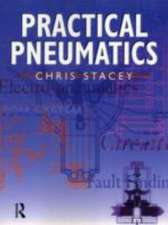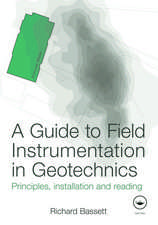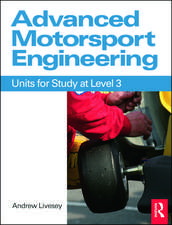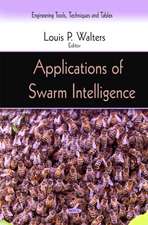Theory of Adaptive Structures: Incorporating Intelligence into Engineered Products: New Directions in Civil Engineering
Autor Senol Utkuen Limba Engleză Hardback – 18 feb 1998
The book follows that modern trend in research and industry striving to incorporate intelligence into engineered products through microprocessors that are becoming smaller, faster, and cheaper at astounding rates. Not using them in engineered products may become an enormous liability.
Resulting from the advances in materials technology on sensors and actuator technologies as well as the availability of very powerful and reliable microprocessors, there is an ever-increasing interest in actively controlling the behavior of engineering systems. Engineers and engineering scientists must revive and broaden their activities to maximize applications for predicting and controlling the behavior of deformable bodies.
Topics include:
The technology of adaptive structures has created an environment where the analysis, not the computation, of structural response - du
Preț: 442.12 lei
Nou
Puncte Express: 663
Preț estimativ în valută:
84.61€ • 91.87$ • 71.07£
84.61€ • 91.87$ • 71.07£
Carte tipărită la comandă
Livrare economică 22 aprilie-06 mai
Preluare comenzi: 021 569.72.76
Specificații
ISBN-13: 9780849374319
ISBN-10: 0849374316
Pagini: 294
Ilustrații: 775 equations; 14 Tables, black and white
Dimensiuni: 156 x 234 x 21 mm
Greutate: 0.59 kg
Ediția:1
Editura: CRC Press
Colecția CRC Press
Seria New Directions in Civil Engineering
ISBN-10: 0849374316
Pagini: 294
Ilustrații: 775 equations; 14 Tables, black and white
Dimensiuni: 156 x 234 x 21 mm
Greutate: 0.59 kg
Ediția:1
Editura: CRC Press
Colecția CRC Press
Seria New Directions in Civil Engineering
Public țintă
ProfessionalCuprins
Preface
Introduction
History
Definitions
Types of Structures
Types of Problems
Qualitative Analysis in State Space
Constituents of Adaptive Structures
Objectives, Scope, and Outline
Incremental Excitation-Response Relations, Static Case
Basic Definitions
Equilibrium of Forces
Geometric Relations
Stiffness Relations of Elements
Incremental Excitation-Response Relations
Active Control of Response, Static Case
Inverse Relations
Actuators of Adaptive Structures
Basic Equations for Adaptive Structures
Actuator Locations and Controls
Observed Response Components and Output
Determination of Controls
Fate of Unobserved Response Components
Control Energy
Compatibility of Controls in Adaptive Structures
Recapitulation
Statically Determinate Adaptive Structures
Excitation-Response Relations
Observed Response Components and Disturbances
Actuators and Controls
Actuator Placement and Control Problems
Actuator Placement and Control Computation When q=p
Introduction
History
Definitions
Types of Structures
Types of Problems
Qualitative Analysis in State Space
Constituents of Adaptive Structures
Objectives, Scope, and Outline
Incremental Excitation-Response Relations, Static Case
Basic Definitions
Equilibrium of Forces
Geometric Relations
Stiffness Relations of Elements
Incremental Excitation-Response Relations
Active Control of Response, Static Case
Inverse Relations
Actuators of Adaptive Structures
Basic Equations for Adaptive Structures
Actuator Locations and Controls
Observed Response Components and Output
Determination of Controls
Fate of Unobserved Response Components
Control Energy
Compatibility of Controls in Adaptive Structures
Recapitulation
Statically Determinate Adaptive Structures
Excitation-Response Relations
Observed Response Components and Disturbances
Actuators and Controls
Actuator Placement and Control Problems
Actuator Placement and Control Computation When q=p
Descriere
Theory of Adaptive Structures furnishes the basic theory needed for actively controlling the behavior of engineering systems. The text examines the advance of materials technology and the advent of powerful, reliable microprocessors.





















